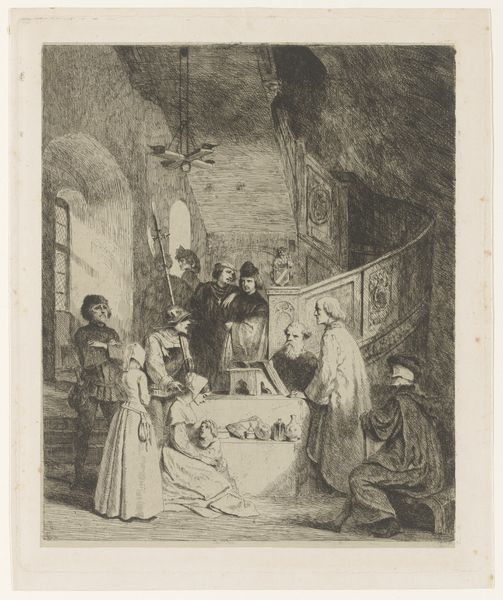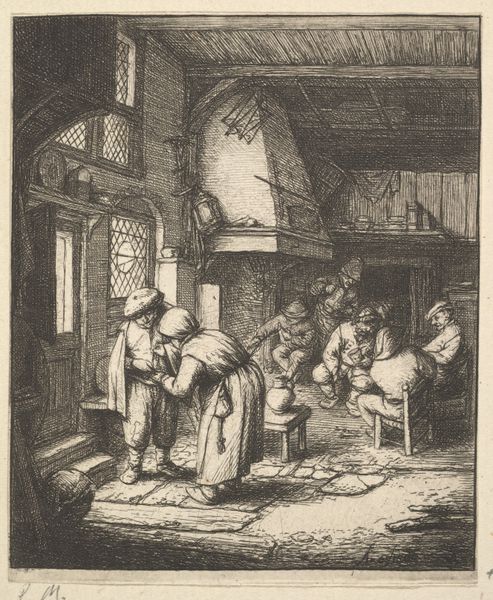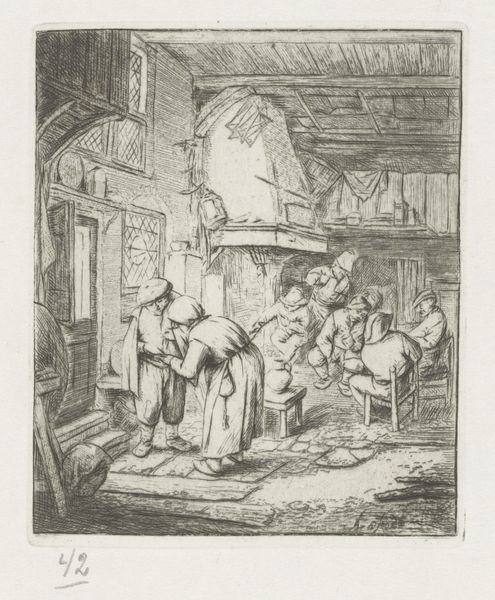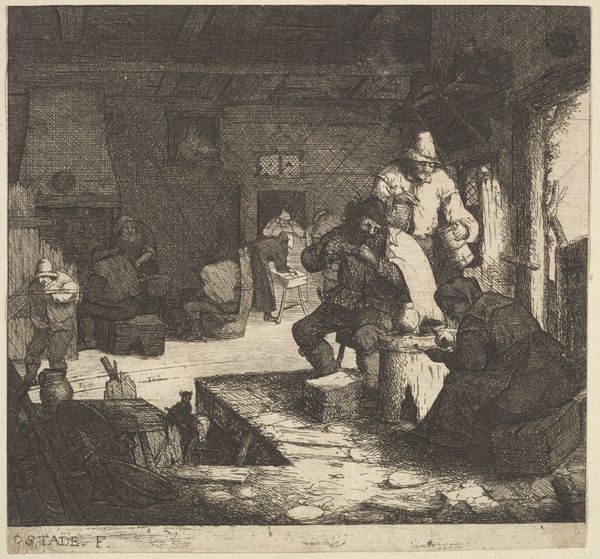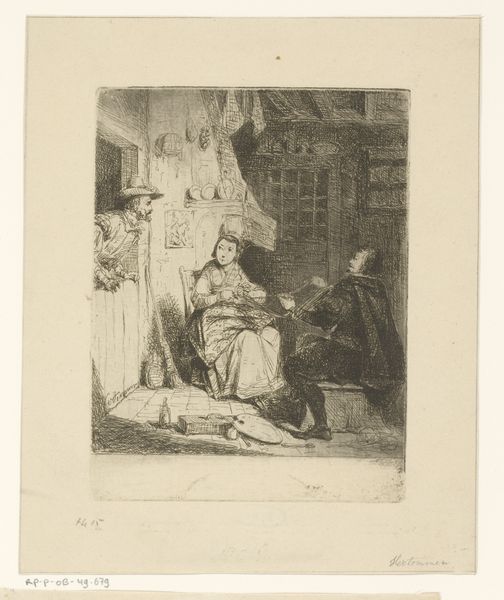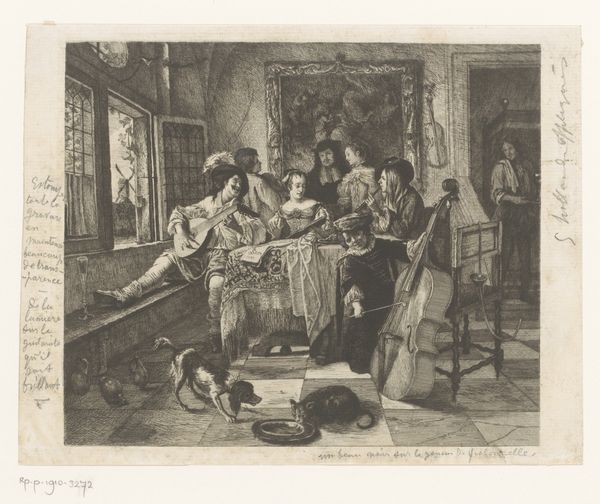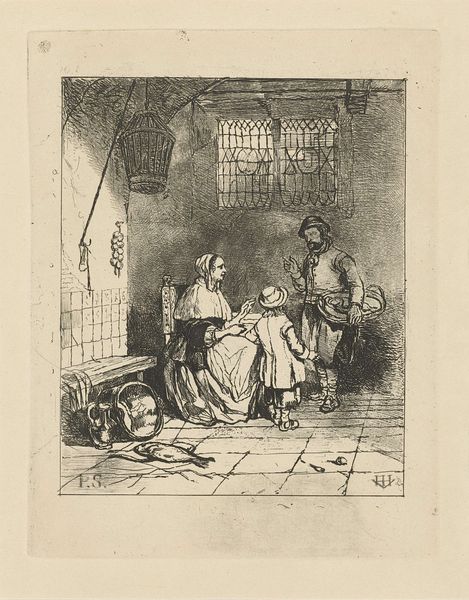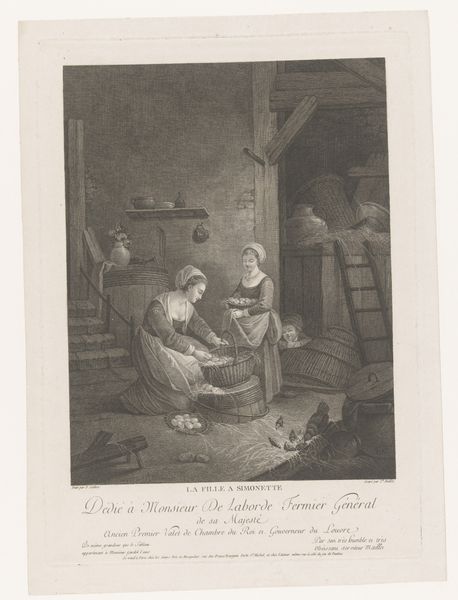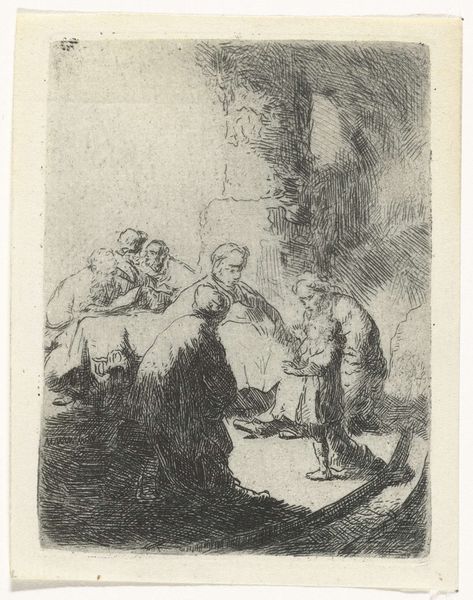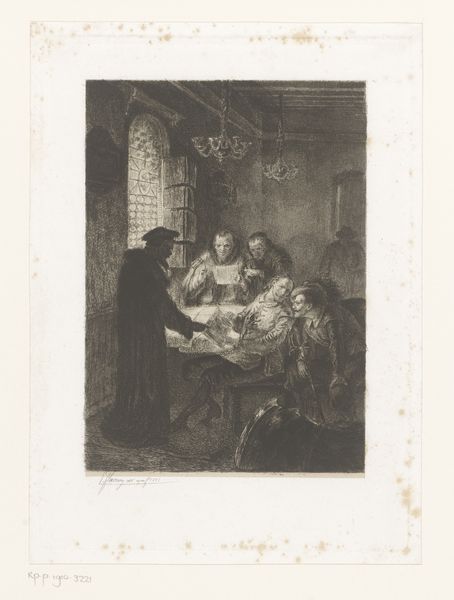
Figuren voor een rechter met op de achtergrond een trap 1857
0:00
0:00
adolphealexandredillens
Rijksmuseum
Dimensions: height 270 mm, width 227 mm
Copyright: Rijks Museum: Open Domain
Curator: Let’s discuss Adolphe Alexandre Dillens' 1857 print, "Figuren voor een rechter met op de achtergrond een trap," which translates to "Figures before a Judge with a Staircase in the Background." Editor: It strikes me as incredibly theatrical, almost stage-like, with a rather oppressive mood evoked by the somber figures and heavy use of shadow. Curator: Indeed. Dillens utilizes engraving to capture this narrative scene, and his choices speak volumes about artistic and societal values. The medium itself, printmaking, allows for reproduction and distribution, suggesting an intention to disseminate this image to a wider public. This challenges assumptions of uniqueness and high art associated with painting. Editor: Look at the way the light falls on certain faces, highlighting the vulnerability of the kneeling woman. What symbolic weight is held by that imposing staircase in the background? The light almost suggests a visual hierarchy, perhaps commenting on class or power structures in the 19th century. Curator: Note also the texture and tone achieved through the engraving process. Each line etched into the plate, and subsequently imprinted onto the paper, creates a tactile quality that draws the viewer in. The physical act of creating these lines emphasizes the labor and craftsmanship involved in producing the print, pushing back against a purely aesthetic or intellectual appreciation. We should also consider the economic conditions which favored such art accessible to lower and middle classes. Editor: The presence of what seems to be a medieval halberd behind the cluster of robed men hints at notions of power and perhaps an archaic legal system. Observe also that sculpture overlooking this exchange on the landing: are we seeing blind justice? Curator: These symbolic inclusions point toward Dillen's vision about the moral and legal implications of the moment being depicted. It emphasizes the interplay between authority, vulnerability, and social justice, encouraging deeper introspection. The visual tension makes one wonder at what point in history Dillen imagined himself! Editor: Perhaps what's more is how the artist sought to invoke universal concepts of law, judgement, and our collective human drama, across temporal, societal divides. What are your closing thoughts, then, as you look at the artwork as a material artifact of its age? Curator: This work reminds us that an art object's value lies not only in its representational image, but its ties to tangible labor, cultural values and economy: engraving gave art consumers access to powerful messages at prices available outside elite spheres.
Comments
No comments
Be the first to comment and join the conversation on the ultimate creative platform.
